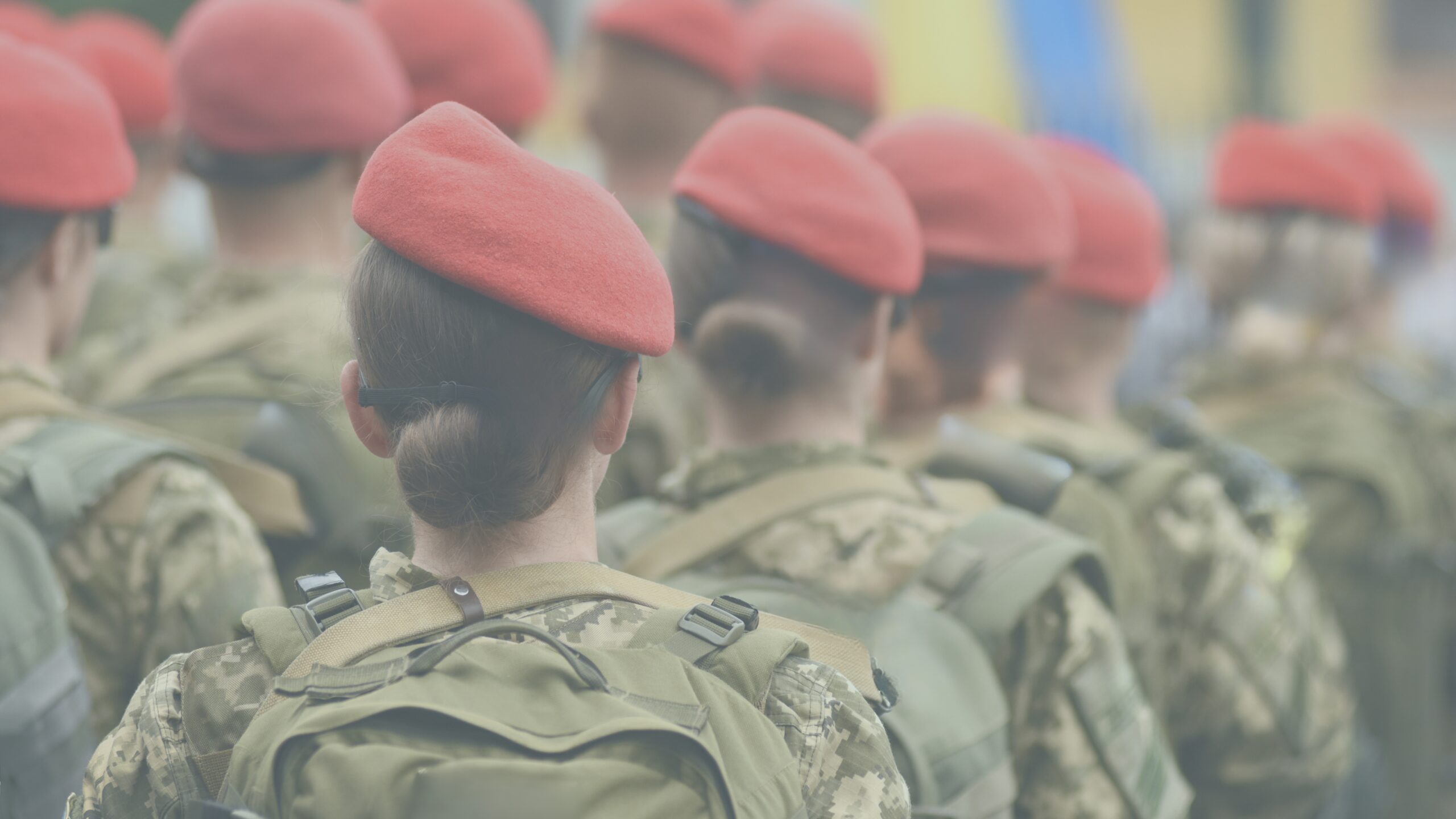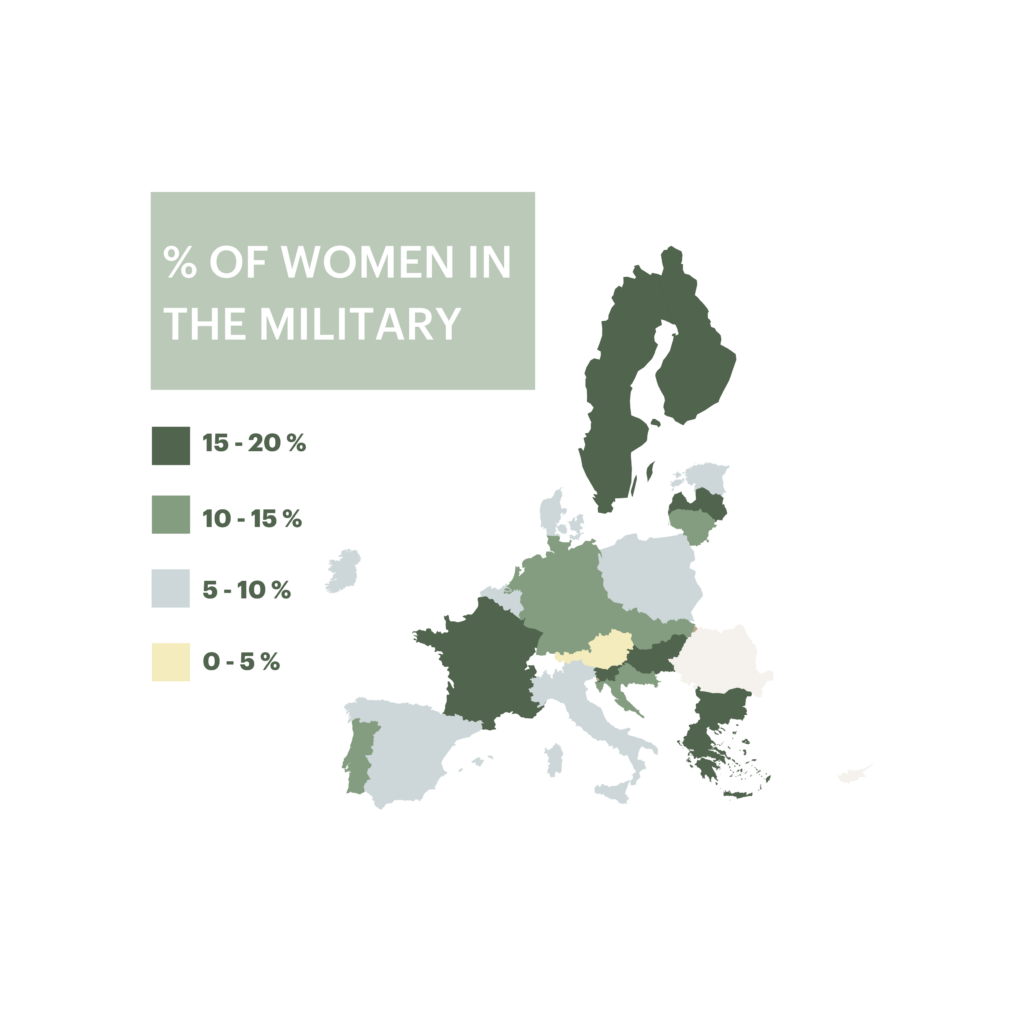This fourth article concludes our series on the state of conscription within the European Union. In the previous article, we explored the arguments often cited against national conscription, focusing on its relevance to contemporary realities.
TOWARDS AN INCLUSIVE MILITARY: THE INTEGRATION OF WOMEN IN EUROPEAN ARMED FORCES

This article examines the role of women in the armed forces within the broader context of societal reforms aimed at promoting gender equality. Despite the accelerated integration of women into the military, they remain a minority and continue to face various obstacles.
A Tradition of Male Overrepresentation Revolutionised by Scandinavian Countries
Scandinavian countries have played a pioneering role in integrating women into their armed forces. In the 1970s and 1980s, Norway and Sweden opened all military training programmes to women, a move later followed by Finland in the 1990s.
These reforms, though often seen as manifestations of Nordic commitment to gender equality, were also pragmatic responses to specific needs, including a shortage of male personnel and the already existing involvement of women in auxiliary roles, as noted by Ahlbäck, Sundevall, and Hjertquist in the Scandinavian Economic History Review.
At the end of the Cold War, most European countries ceased to maintain compulsory conscription. Norway marked a turning point by becoming the first NATO country to implement inclusive conscription in 2015.
In Europe, Sweden has particularly distinguished itself for its commitment to gender equality, being the second nation, after its neighbour Norway, to introduce gender-neutral conscription in 2017. Sweden became the first country in the world where all military positions were open to women in 1989.
Denmark, which has recently adopted a similar policy, plans to include women in the draft from 2024. This decision is motivated not only by personnel challenges but also by a commitment to gender equality and national mobilisation.
Unequal Participation in Europe: The Good and the Bad Students
In 2021, the average female participation in NATO armed forces was 13.9%, as noted by Besch and Westgaard for Carnegie. Currently, within the European Union, female participation in the armed forces is even lower, with an average of 10% according to Terhi Lehtinen for EU Defence Declassified, who realistically suggests that reaching the ideal of 40 or 50% in the near future would not be feasible.
The presence of women in the armed forces varies significantly from country to country. The most advanced nations in this regard are distinguished by female participation rates that are markedly higher than the average. Leading this ranking, Sweden and Hungary stand out with a proportion of women in their armed forces reaching 20%, closely followed by Finland at 19% and Bulgaria at 17%.
In contrast, some European countries fall far short of such participation levels. Italy and Poland, with only 6% and 7% respectively, and Austria, where this figure drops to 4%, rank among the poorer performers in this area.

Persistent Barriers and Challenges
Despite these advances, numerous obstacles continue to hinder the increase in female participation in the military. Cultural and historical stereotypes persist, suggesting that the military is not a suitable environment for women. Added to this are practical constraints, such as inadequate infrastructure and equipment, as well as personal barriers, with women sometimes being less inclined to engage in military service. These factors, combined, hinder the increase in the number of women in the ranks and deter potential new recruits.
Moreover, inequalities in treatment, ranging from discrimination to sexual harassment, remain a significant problem in many armed forces, according to Besch and Westgaard. This reality contributes to limiting women’s engagement and restricting their progress within the military hierarchy.
Terhi Lehtinen and Carolin Hendrys, for EU Defence Declassified, highlight the importance of creating a more inclusive and balanced work environment for women in the military. Lehtinen emphasises the need to ensure a balance between work and personal life, as well as a work environment conducive to inclusion. Certain roles and careers, particularly those requiring frequent travel or regular training, remain less attractive to women who wish to start a family.
Regarding the distribution of women within different military branches, Lehtinen observes that they are primarily concentrated in medical, technical, logistical, and support roles. Callum Watson from the OSCE corroborates this analysis by noting that women are overrepresented in medical, logistical, communication, and administrative jobs, while they remain underrepresented in more combative or technical fields. This uneven distribution within the different military branches still reflects the challenges women face in accessing all available roles in the military and underscores the need to continue efforts to achieve better representation in the armed forces.
Motivations for Engagement and Future Perspectives
The reasons that motivate women to join the military often differ from those of men. According to Binková and Štěpánková, in a study for the International Conference on Gender Research, women are primarily attracted by financial stability, professional training, and interpersonal relationships. However, they are more reluctant to face the inherent risks of the profession, such as the prospect of being deployed on missions—factors which discourage them more than their male counterparts.
Despite these challenges, it is crucial to strengthen female presence in the armed forces. Admiral Sir Keith Blount and Lieutenant Colonel Sheri Lattemore from NATO stress that leadership qualities such as strength, decision-making, and confidence, typically associated with masculinity, are not exclusive to one gender. Increased diversity in the armed forces could thus bring a wealth of skills and perspectives, beneficial for overall military operations.
Conclusion
The military, once a bastion of masculinity, is slowly evolving into a more inclusive institution, where the role of women is increasingly recognised. Despite recent developments in Western democracies, where the integration of women into the military has accelerated, they remain a minority and still face restrictions regarding the roles they can occupy and career progression opportunities. For better representation of women within the armed forces, it is imperative to overcome the persistent cultural and structural obstacles while continuing to promote inclusive policies. These efforts reflect not only changes within the military but also a broader societal transformation towards gender equality.
SOURCES
EU DEFENCE DECLASSIFIED, PROCEEDINGS OF THE 6TH INTERNATIONAL CONFERENCE ON GENDER RESEARCH, SOCIOLOGIJA I PROSTOR, NATO, SCANDINAVIAN ECONOMIC HISTORY REVIEW, SJMS, OSCE